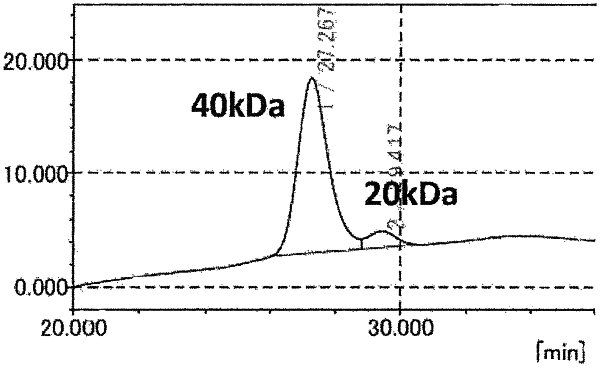| CPC C08G 65/33396 (2013.01) [A61K 47/65 (2017.08); C08G 65/325 (2013.01)] | 18 Claims |

|
1. A degradable polyethylene glycol derivative represented by the following formula (1):
 wherein m is 1-7, n1 and n2 are each independently 45-682, p is 1-4, R is an alkyl group having 1-4 carbon atoms, Z is an oligopeptide with 2-8 residues composed of neutral amino acids excluding cysteine, Q is a residue of a compound having 2-5 active hydrogens, X is a functional group capable of reacting with a bio-related substance, and L1, L2, L3, L4 and L5 are each independently a single bond or a divalent spacer, and
wherein the oligopeptide for Z is an oligopeptide having at least one hydrophobic neutral amino acid having a hydropathy index of not less than 2.5.
|